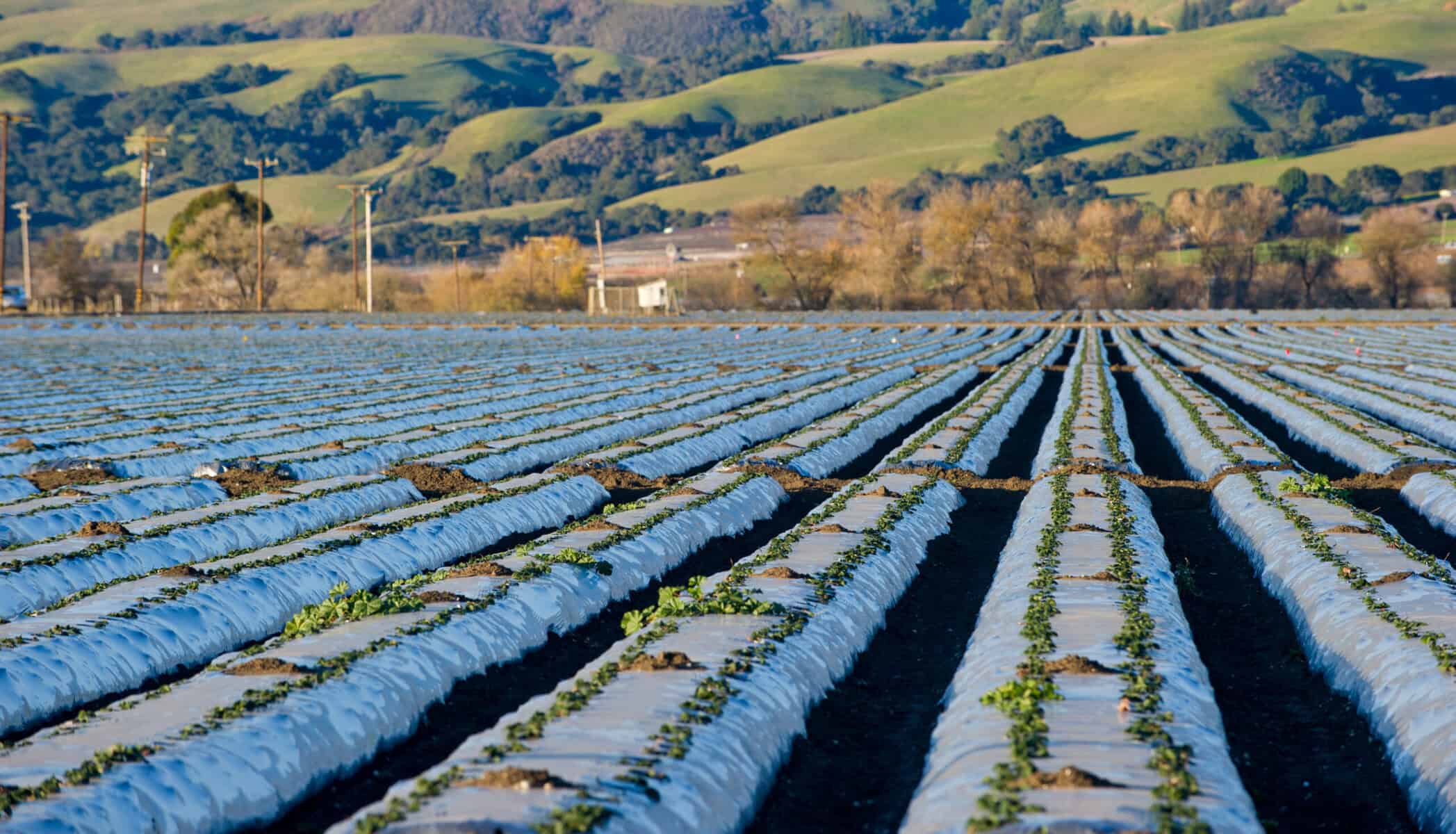

Row crop agricultural field in the gentle rolling hills of San Benito County in California. Photo taken January 14, 2013. John Chacon / California Department of Water Resources
The agricultural use of plastic film is especially prevalent in the strawberry fields of California’s Central Coast region, but it occurs just about everywhere food is grown. From Modesto to Manteca, from Davis to Petaluma, and throughout the Delta and North Bay regions, plastic sheeting for hoop-style greenhouses and groundcovers are seen in fields beside public roads and waterways, sometimes strewn in windblown rags and tatters, waiting for disposal.
Though unsightly and potentially harmful, plastic has just about everything else going for it. Flexible, strong, and dirt-cheap, plastic is used in many standard farming applications, including irrigation tubing or “tape,” film for hoop houses and ground covers, and uncountable plastic pots, clips, ties, tags, and labels. Sludge from wastewater treatment plants, rich with microplastic pollution, is applied as fertilizer on many conventional farms, intensifying plastic buildup in soils. Perhaps most alarming is the widespread use of microplastic coatings on fertilizer and pesticide granules — a practice international organizations want to see banned.
…fields in Monterey County alone collectively use 10,000 tons of plastic annually — especially disposable drip irrigation tubing and plastic film, which are often bulldozed into heaps following each harvest
It all adds up. An analysis from the California Marine Sanctuary Foundation estimated that fields in Monterey County alone collectively use 10,000 tons of plastic annually — especially disposable drip irrigation tubing and plastic film, which are often bulldozed into heaps following each harvest. The same materials are used globally, and across the world farmers use roughly 13 million tons of plastic each year, according to a United Nations Food and Agriculture Organization report.
Though farm plastic amounts to less than five percent of all plastic production — now approaching half a billion tons annually — its use on farms is concerning for several reasons, including its proximity to food supplies and to farmworkers. There is evidence, too, that microplastic pollution can decrease long-term fertility of soil and its ability to cling to water. All of which make worse findings that microplastic buildup is happening many times more rapidly in soils than in the ocean.
In a white paper published in March, UC Davis researchers Donald Bruun and Pamela Lein discussed, among other concerns about ag plastic, the findings of a study on radishes. Alarmingly, the presence of microplastic in the soil was correlated to the transfer of a potent insecticide, chlorpyrifos — a controversial insect poison linked to disrupted human brain development and banned in many countries — into the edible […]
Full article: mavensnotebook.com
Clean water is essential for life, yet millions of Americans unknowingly consume contaminants through their…
Human brains contain higher concentrations of microplastics than other organs, according to a new study, and the…
From the Office of the Governor: In anticipation of a multi-day, significant atmospheric river in Northern California,…
From Governor Newsom: Scientists, water managers, state leaders, and experts throughout the state are calling…
Photo: A harmful algal bloom in Milford Lake, Kansas, made the water appear bright green.…
An expanded plastic foam coffee cup is at a donut shop in Monterey Park, California.…